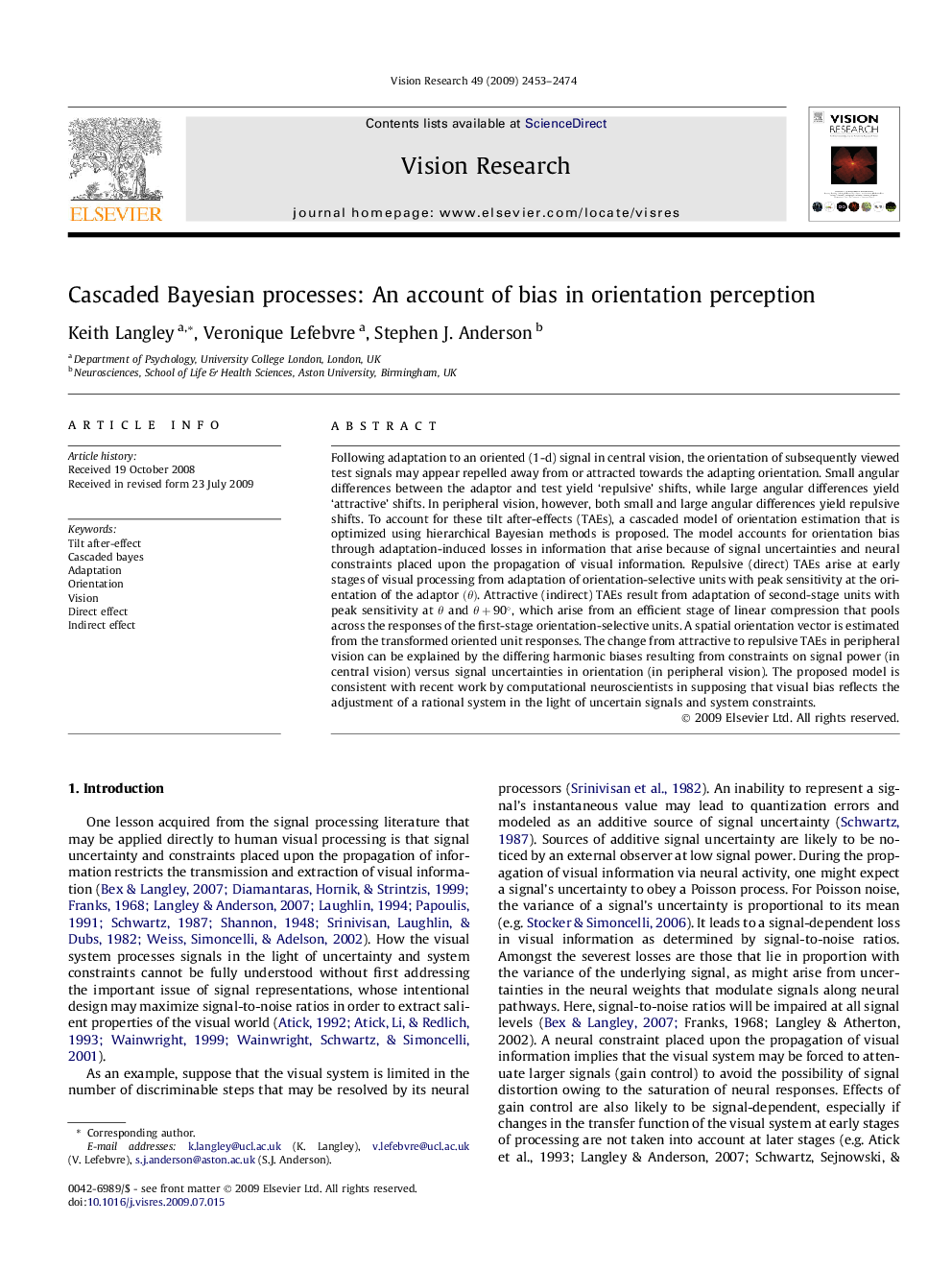| Article ID | Journal | Published Year | Pages | File Type |
|---|---|---|---|---|
| 4034673 | Vision Research | 2009 | 22 Pages |
Following adaptation to an oriented (1-d) signal in central vision, the orientation of subsequently viewed test signals may appear repelled away from or attracted towards the adapting orientation. Small angular differences between the adaptor and test yield ‘repulsive’ shifts, while large angular differences yield ‘attractive’ shifts. In peripheral vision, however, both small and large angular differences yield repulsive shifts. To account for these tilt after-effects (TAEs), a cascaded model of orientation estimation that is optimized using hierarchical Bayesian methods is proposed. The model accounts for orientation bias through adaptation-induced losses in information that arise because of signal uncertainties and neural constraints placed upon the propagation of visual information. Repulsive (direct) TAEs arise at early stages of visual processing from adaptation of orientation-selective units with peak sensitivity at the orientation of the adaptor (θ)(θ). Attractive (indirect) TAEs result from adaptation of second-stage units with peak sensitivity at θθ and θ+90°θ+90°, which arise from an efficient stage of linear compression that pools across the responses of the first-stage orientation-selective units. A spatial orientation vector is estimated from the transformed oriented unit responses. The change from attractive to repulsive TAEs in peripheral vision can be explained by the differing harmonic biases resulting from constraints on signal power (in central vision) versus signal uncertainties in orientation (in peripheral vision). The proposed model is consistent with recent work by computational neuroscientists in supposing that visual bias reflects the adjustment of a rational system in the light of uncertain signals and system constraints.
